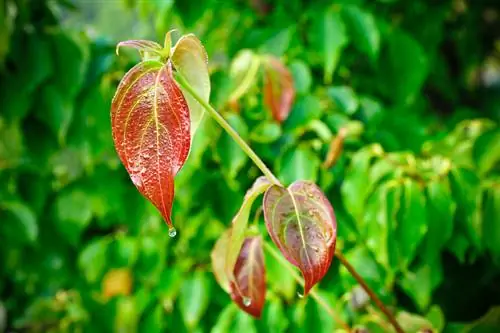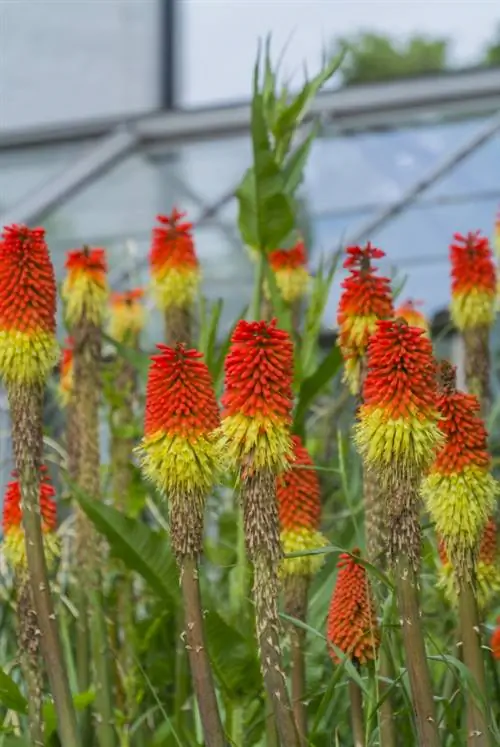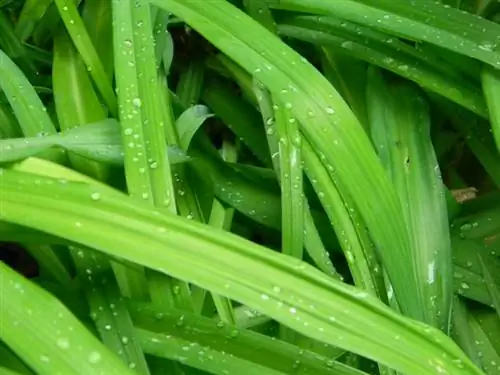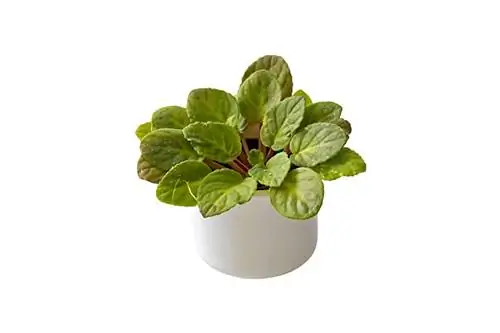- Author admin [email protected].
- Public 2023-12-16 16:46.
- Last modified 2025-06-01 06:02.
Although the dogwood or horn bush (Cornus) is considered to be very robust and easy to care for, it can still sometimes cause problems - especially if it does not feel comfortable in a location or is cared for incorrectly. The plant often shows its discomfort by not flowering. Sometimes, however, the cause is not your fault, because the dogwood only blooms after a few years of standing.
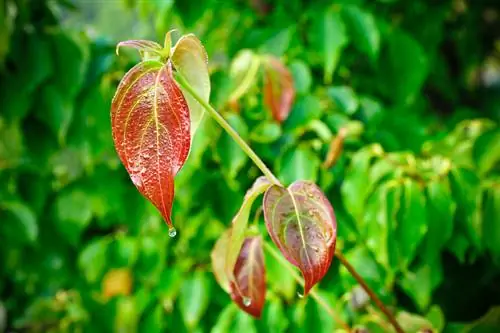
Why isn't my dogwood blooming?
If a dogwood does not bloom, it may be due to its young age, an unsuitable location, incorrect care or the wrong soil. Patience, suitable soil, sufficient water and the right amount of light promote flower formation.
Dogwoods only bloom after several years of standing
If you have purchased a rather small specimen or even grown the dogwood yourself from a cutting or seed, you actually have to be patient for a few years until the first flowering. The dogwood only blooms when it is at least five years old, and is usually even older. Even older, but freshly planted specimens must first overcome plant shock before they even bloom. The reason for this is the rather slow growth of younger dogwoods.
The cause is often an unsuitable location or incorrect care
However, patience is not always enough, because sometimes the lack of willingness to bloom can be traced back to external causes. This can be an unsuitable location, but also incorrect or inadequate care. Dogwood should be watered especially in very hot and/or dry months, because extreme drought stresses the plant and causes it to fail to bloom.
Make sure you have the right floor
If the dogwood doesn't want to bloom, it may be in the wrong soil. It is often said that Cornus needs slightly acidic soil and should therefore be planted in ericaceous soil. In principle, this information is correct - for some dogwood species. Of the approximately 55 different species, some actually require acidic soil, but others prefer a calcareous substrate. Therefore, before planting, you should check carefully which species and variety you have purchased/want to purchase and which soil it thrives in.
Not too little, but not too much sun either
The same principle applies with regard to sun intensity, with most dogwood species preferring a bright location. Light is generally positive, but only a few dogwoods can tolerate full sun. Some are even better off in light partial shade, so the same applies here: First take a close look at the variety label.
Tip
You also need patience with many flowering dogwoods, as they often only bloom in very warm and sunny years. If it is too cold or too dark for you, the flower may fail.

